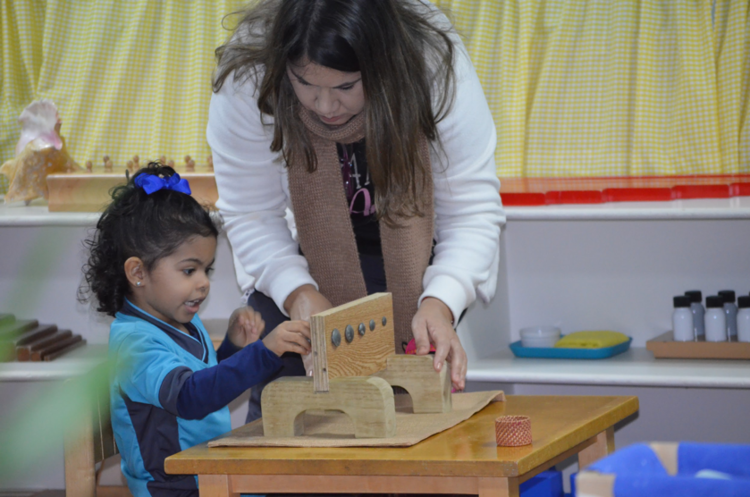What is a Montessori environment?
By Andrea Santiago Vicente
Environment is what classrooms are called in the Montessori philosophy.
The environments are usually spacious and aesthetically pleasing. They exhibit materials that attract the attention of boys and girls, as they respond to their development needs. Each material has a purpose and function within the methodology.
The environment must meet the objective of leading the child to independence, to exercise freedom within limits and to a sense of order. The materials are on shelves adjusted to the height of the children, so that they can be accessed without the help of an adult.
''When I receive children who have this experience for the first time with a Montessori environment and Montessori materials, the first thing they say is ''so many toys!'' They consider all these to be toys. And ecstatic, they want to touch them, they want to explore them, that basically is the experience,'' guide Wanda Montes, who has been in the philosophy since 2007, told us.
Wanda, who is a Early Childhood guide at the Montessori Manuel Elzaburu y Vizcarrondo school, told us that the area that most attracts the children's attention is Practical Life, where they have grains, water, glass containers, plates, brooms. and other materials that motivate children. An Early Childhood environment is divided into Practical Life, Sensory, Mathematics, Language and Cultural Studies.
''The enrichment of the environment, having these materials with their different skills and levels of work and difficulty, helps prepare them to get to that point. All these materials that we have in Practical and Sensory Life are what help them prepare for reading and writing. They follow a sequence in which they work from left to right, from top to bottom, which is the same way we read and write,'' the guide explained to us about one of the many benefits of the environment and its materials.
Precisely Wanda fell in love with the Montessori philosophy because of the materials that are part of the environment. She worked as a traditional first grade teacher at the Sofía Rexach school and after two years, in 2006, the school director spoke to her about the methodology with the vision of transforming the school community. That's when she and a group of teachers decide to take an orientation on the philosophy.
''That day the person came to guide us and talk to us about the project. It started with the story of Maria Montessori and it was very interesting. Then she brought some Montessori materials with her and presented them, explained them and I saw that behind each one of them, apart from her beauty, she had an objective, a very subtle skill, but it was there. The way in which the child would be presented with the objective, the way in which that material or that process in which it would be given would help the student… it is something that I honestly cannot describe. It really came to me and as I said before I fell in love and said yes to the transformation..., and here I am'', that was the meeting of the guide with the philosophy.
Another element of Montessori environments such as the Early Childhood that Wanda directs, is that you find students from 3 to 6 years old. The methodology believes in multi-age groups , since they are essential because the minors learn from the elders and the elders benefit by reinforcing their skills when they help the minor.
Wanda has been in the Montessori project for 12 years and stated that she would not change it. '' Montessori has touched my life, and has kept me passionate from day one. It is my vocation and Montessori really fulfills me to be able to impart and fulfill those needs that students need to be good individuals and receive what they need for life, to develop''.




